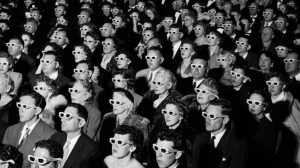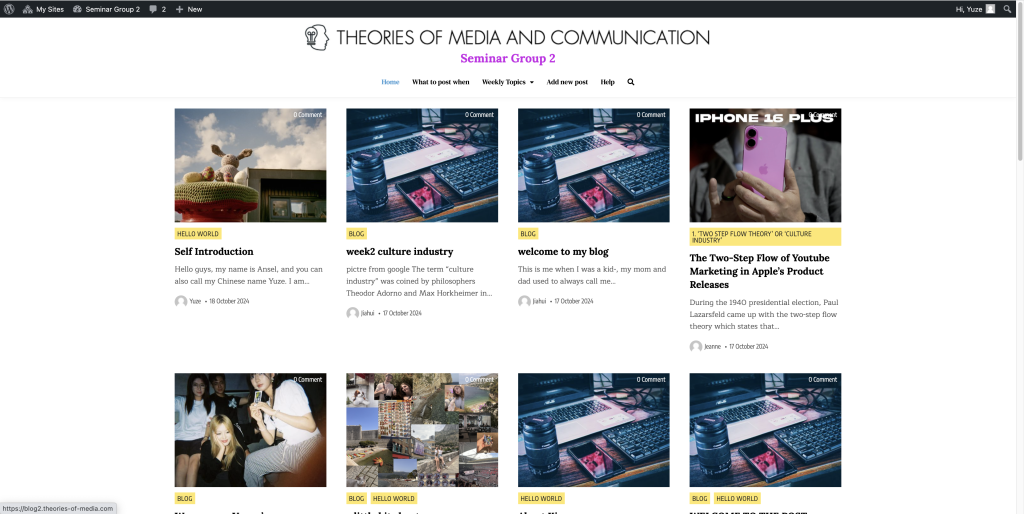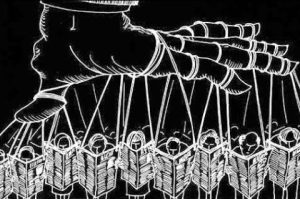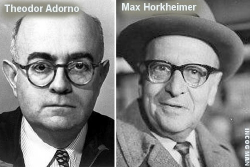“The pop hegemony is all but complete, its superstars dominating the media and wielding the economic might of tycoons…Culture appears more monolithic than ever, with a few gigantic corporations—Google, Apple, Facebook, Amazon—presiding over unprecedented monopolies.”
——Ross, Alex (Sep. 2014) “The Naysayers: Walter Benjamin, Theodor Adorno, and the critique of pop culture The New Yorker
The concept of cultural industry first emerged in Dialektik der Aufklärung (Adorno, T.W. and Horkheimer, M., 1997.), which differentiated between mass culture and cultural industry.

At the time, cultural industry was considered a combination of economy and culture, and scholars discussed the relationship between production and market in artworks. The cultural industry was not only a special artistic form but also a particular economic form. The government’s involvement in subsequent development enriched the concept of cultural industry, and digitalisation and globalisation became driving forces for its development. Marshall McLuhan coined the phrase “The Medium is the Message,” which impacted the cultural industry with the emergence of new media. The cultural industry based on the experience mode is currently impacting the existing product creation model, and the shift from unidirectional communication to bidirectional interaction is considered a new development in the cultural industry.
Is the development of cultural industry sustainable?
Exploring the changes in the cultural industry through one’s practice: The cultural industry that exists in the society where people live is almost everywhere we can access, even in history, the cultural industry is constantly being built. Thousands of years ago, people carved on stone walls, leaving murals as the representative of the cultural industry of that era; Hundreds of years ago, letters built the foundation of the cultural industry through words, poetry being the most classic part of it; And now, with the development of social media, posts published on the internet convey different ideas. That’s why this post is here, and when you read this, you will also become part of the history of the cultural industry.


It is important to critically consider the role of other factors in the development of cultural industries. The complexity of cultural industries means that various conditions bind them, and in some contexts, cultural industries may take the form of art, but sometimes also as national broadcasting (Hesmondhalgh, D. and Pratt, A.C., 2005.). The intervention of state means makes the difference in the nature of cultural industries, which are often based on the basic situation of the local society.
The changes in the cultural industry are ongoing and era-specific, changing with the progress of human wisdom and technology.
Reference
Adorno, T.W. and Horkheimer, M., 1997. Dialektik der aufklärung (Vol. 3). Suhrkamp Taschenbuch Verlag.
Hesmondhalgh, D. and Pratt, A.C., 2005. Cultural industries and cultural policy. International journal of cultural policy, 11(1), pp.1-13.
McLuhan, M., 2017. The medium is the message. In Communication theory (pp. 390-402). Routledge.
Ross, Alex., 2014. “The Naysayers: Walter Benjamin, Theodor Adorno, and the critique of pop culture The New Yorker


Hi Yuze,
This is an insightful exploration of the evolution and influence of the cultural industry. You’ve effectively summarised how cultural industries have developed from ancient forms, like stone murals, to today’s digital social media. I agree that the blending of economy and culture, particularly with the dominance of corporations like Google and Amazon, is reshaping how we experience media. An example that comes to mind is the global reach of streaming platforms like Netflix, which allows viewers worldwide to experience diverse cultures while the platform also drives economic profit but also has risks. In general, I like your post.